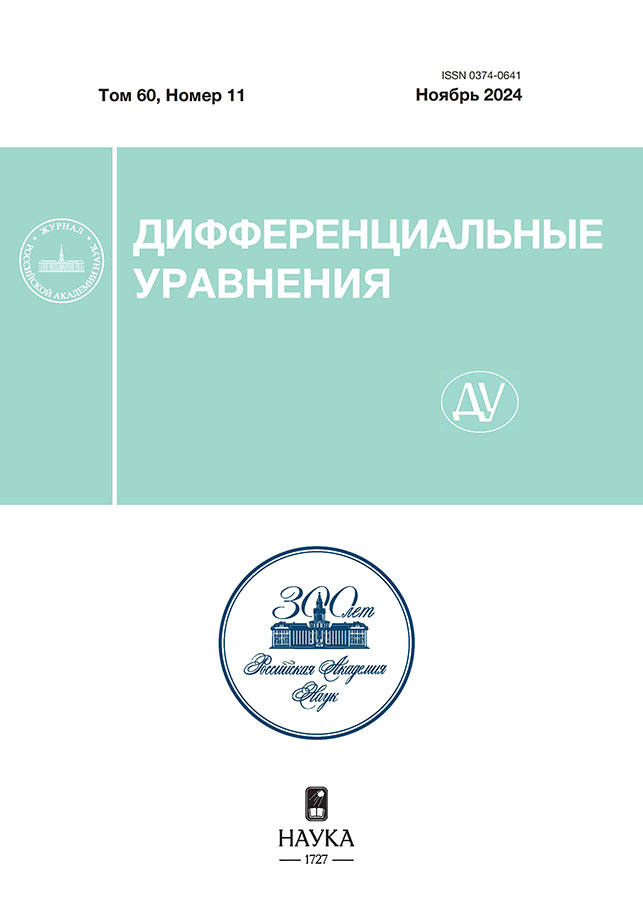QUANTITATIVE CONTROLLABILITY INDEXES OF NONLINEAR SYSTEMS
- Autores: Pirogova A.D1, Chetverikov V.N1
-
Afiliações:
- Bauman Moscow State Technical University
- Edição: Volume 60, Nº 11 (2024)
- Páginas: 1519-1530
- Seção: CONTROL THEORY
- URL: https://ter-arkhiv.ru/0374-0641/article/view/649591
- DOI: https://doi.org/10.31857/S0374064124110076
- EDN: https://elibrary.ru/JEBIUY
- ID: 649591
Citar
Texto integral
Resumo
The problem of optimal choice of system parameters with respect to a given control quality criterion is studied. To compare systems with different parameter values, a quantitative estimation of controllability is introduced. This estimation is based on the average value of the function that defines the quality criterion. As an example, a very simplified model of an underwater vehicle is considered. The problem of finding an arrangement of its control propellers, in which either the movement time or the energy consumption of the vehicle is minimal is investigated. To test the used approach, the trajectories of the underwater vehicle are randomly generated. The energy consumption and the movement time along these trajectories of systems with different parameter values and different indexes are compared.
Sobre autores
A. Pirogova
Bauman Moscow State Technical University
Email: pirogova_arina@mail.ru
Russia
V. Chetverikov
Bauman Moscow State Technical University
Email: chetverikov.vl@yandex.ru
Russia
Bibliografia
- Kalman, R.E. Controllability of linear dynamical systems / R.E. Kalman, Y.C. Ho, K.S. Narendra // Contribut. to the Theory of Differ. Equat. — 1963. — V. 1, № 2. — P. 189-213.
- Muller, P.C. Analysis and optimization of certain qualities of controllability and observability for linear dynamical systems / P.C. Muller, H.I. Weber // Automatica. — 1972. — V. 8, № 3. — P. 237-246.
- Rhodes, I.B. Some quantitative measures of controllability and observability and their implications / I.B. Rhodes // Contr. Int. Fed. Autom. Contr. — Kyoto, Japan, 24-28 August 1981. — P. 24-28.
- Schulz, G. Dislocated actuator/sensor positioning and feedback design for flexible structures / G. Schulz, G.J. Heimbold // Guid. Control Dyn. — 1983. — V. 6. — P. 361-367.
- Kondon, S. The positioning of sensors and actuators in the vibration control of flexible systems / S. Kondon, C. Yatomi, K. Inoue // JSME Int. J. — 1990. — V. 33. — P. 145-152.
- Xing, G.Q. Actuator placement using degree of controllability for discrete-time systems / G.Q. Xing, P.M. Bainum // J. Dyn. Syst. Meas. Control. — 1996. — V. 79. — P. 51-88.
- Kirillov, O.E. and Lisienko, V.G., Quantitative analysis of controllability and its application in approximate decomposition of linear dynamic systems, Automation and Remote Control, January 1997, vol. 1, no. 1, pp. 4756.
- Lee, H. Degree of controllability for linear unstable systems / H. Lee, Y. Park // J. Vib. Control. — 2016. — V. 22. — P. 1928-1934.
- Zhang, L. A new method for determining the degree of controllability of state variables for the LQR problem using the duality theorem / L. Zhang, K.A. Neusypin, M.S. Selezneva // Appl. Sci. — 2020. — V. 10. — Art. 5234.
- Voronin, A.V., Qualimetry of accessibility and disturbance of linear dynamic systems, Izv. Tomsk. politeh. univ. (Proceedings of the Tomsk Polytechnic University), 2013, vol. 323, no. 5, pp. 74-78.
- Velishchanskiy, M.A. and Chetverikov, V.N., Searching for parameters of a model with the best local controllability, Differ. Equat., 2023, vol. 59, no. 12, pp. 1758-1768.
- Fossen, T.I. Guidance and Control of Ocean Vehicles / T.I. Fossen. — Chichester : John Wiley and Sons, 1994. — 480 p.
Arquivos suplementares










